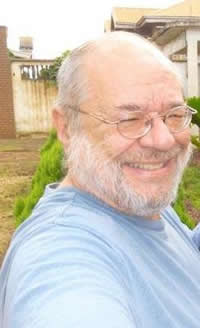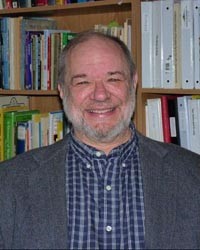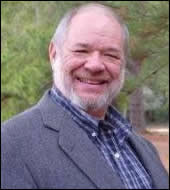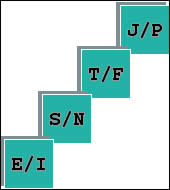| home | calendar of events | our products | contact us |
 |
DR. MARK S MAJORS |
|
|---|
 |
Dr. Mark S. Majors is psychometrician, author, educator, psychologist and coach. His academic background includes B.Sc. and M.Sc. degrees in Psychology from the Iowa State University and Ph.D. in Counseling Psychology and Multicultural Studies from the University of Nebraska-Lincoln. He worked as Research Scientist at CPP (Consulting Psychologists Press), and was Director of Research at the CAPT (Center for Applications of Psychological Type). He participated and led the development of many psychological assessment tools such as the Myers-Brigs Type Indicator® (MBTI® Step I, Step II and Step III), the Pearson-Marr Archetype Indicator® (PMAI®), the Klein Group Indicator (KGI), the X-Styles Interstrength® and the Strong Interest Inventory-Campbell (Strong®), and also developed his own instruments:
- the MajorsPTI Temperament Report, |
||
|---|---|---|---|
He is currently developing a new version of an instrument to assess psychological types. Know more about its history as psychometrist in her autobiography. |
|||
| Market vision and business focus | top of page |
|---|
My professional work and research focus on developing innovative personality assessment tools that give leaders and managers the quantitative information they need to make informed decisions." Mark S Major, PhD |
|||
| Autobiography (focus on psychometry) | top of page |
|---|
 |
There are probably very few psychometric biographies written about an individual. One might write the history of the development of an assessment tool, but not a person. When I was originally approached to write down the psychometric part of my history, I thought "What on earth for?" Favoring the psychological type preferences of ENFP, I typically am in the here and now briefly until the onset of the next moment. So thinking historically, particularly with respect to psychometrics, is an odd experience, even for me. I began my collegiate experience as a Psychology Major at Iowa State University in January of 1989. I completed my undergraduate (B.S.) work in two years and one semester. During those 2½ years the foundation of my psychometric future was laid. My first undergraduate advisor was Frederick Brown, an author of textbooks on measurement and psychometrics. He became an invaluable source to me for the answers that were not in the texts, and got me thinking about how to ask questions. The second stimulating influence came the first summer when I took a class in Abnormal Psychology from |
||
|---|---|---|---|
Fred Borgen whose major professor was David Campbell. Fred's doctoral dissertation was the factor analysis that resulted in the basic interest scales in what was called at that time the Strong-Campbell Interest Inventory. My relationship with Fred Borgen grew, and I began to be involved with his research projects. The following spring I took my first course in psychometrics (it used Frederick Brown's text and was taught by Leroy Wolins). Dr. Wolins was involved with work on the Kuder Career Assessment and was a leader in the field of measurement analysis and psychometrics. He affectionately called me "boy" in class, even though I already had one grandchild, a delight to me that my younger classmates could not comprehend. Dr. Wolins taught me to question everything, to make no assumptions about measurement and psychometrics. These were welcomed words for a critical rebellious thinker like myself. He told me to continuously and critically evaluate a test item. |
|||
| return to home |
| APTi Innovation Award | top of page |
|---|
 |
Mark is an author, psychometrician and research scientist with over 25 years of instrument development and design. At CPP he participated in the development and design of MBTI® Forms M & Q, and the 1994 strong Interest Inventory. Working with CAPT he developed and designed the MBTI® Step III, Pearson Marr Archetype Indicator PMAI, and Klein Group Indicator KGI. Additionally he has produced two Majors Type Assessments, PTI and PT-Elements.
|
||
|---|---|---|---|
Mark is a recognized expert in using personality differences to reduce conflict and stress in relationships. He was a CAPT faculty member and has had a working alliance with 16 types.com, CPP, CAPT, Breckenridge Institute, CLSR. Currently he is associated with Developing Great Relationships, Aurelius Press, Center for Managing Change, ACER (Australia) and kenkoso (Brazil). Mark has traveled worldwide informing, teaching, and training professionals on the ethical use of Jungian Type. He has done innovative work with regards to the 8 Majors-Jungian processes as well as with personality formation. He has worked with consultants in showing clients how their process scores and personality formation influence their decision-making capacities as well as their ability to work on teams. He is empathetic and compassionate. He focused on the observable and avoids pigeonholing individuals. Mark works with clients to see what their Type is without slavish adherence to assessment results. In addition to working with psychologists Mark works with other front line people, e.g., social workers, clergy, life coaches, and consultants. He uses his extensive knowledge of Jungian Type to help individuals, organizations and couples develop and prosper. He also provides typologically based conflict resolution for teams, church staff, and married couples. Mark lives with his wife, Mary, (20 years) in the Ozark Mountains (hills) of southern Missouri. He has two adult children, ten grandchildren and a great granddaughter due in August. He spends his free time working on his off-grid home and playing music. He and Mary enjoy traveling and taking pictures of nature. Mark has a passion for using psychological type to improve all forms of relationships. As a research scientist and psychometrician he is a dedicated to operationalizing all of Jung's theoretical work on psychological types.
|
|||
| return to home | top of page |
 |
DR. MARK S MAJORS |  |
TIPS FOR PERSONAL DEVELOPMENT |  |
QUALIFIED PROFESSIONAL AREA |  |
MAJORS PT-E TM |
| Privacy Police | Terms of Use | ©2014 kenkosô All rights reserved | ||